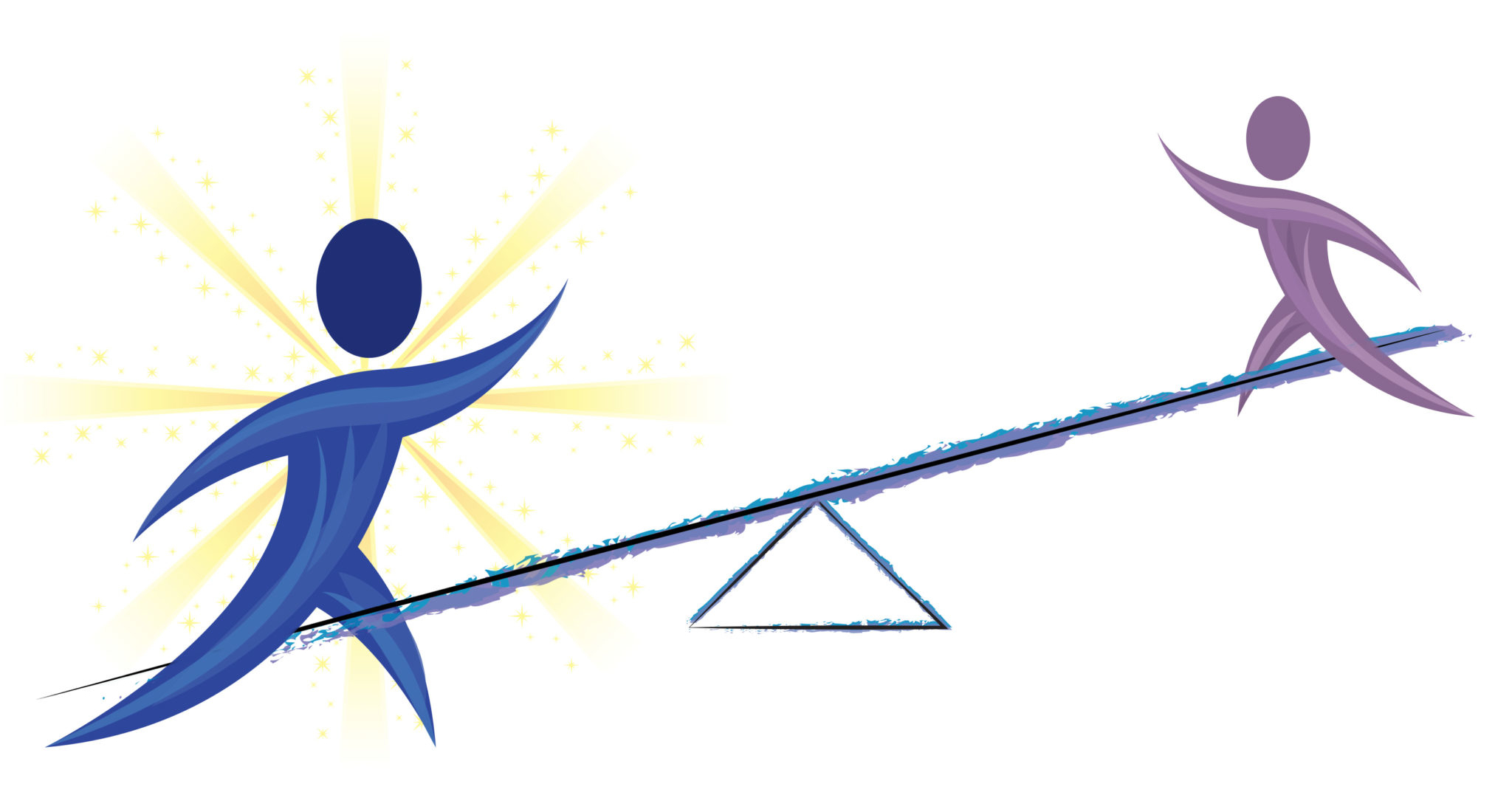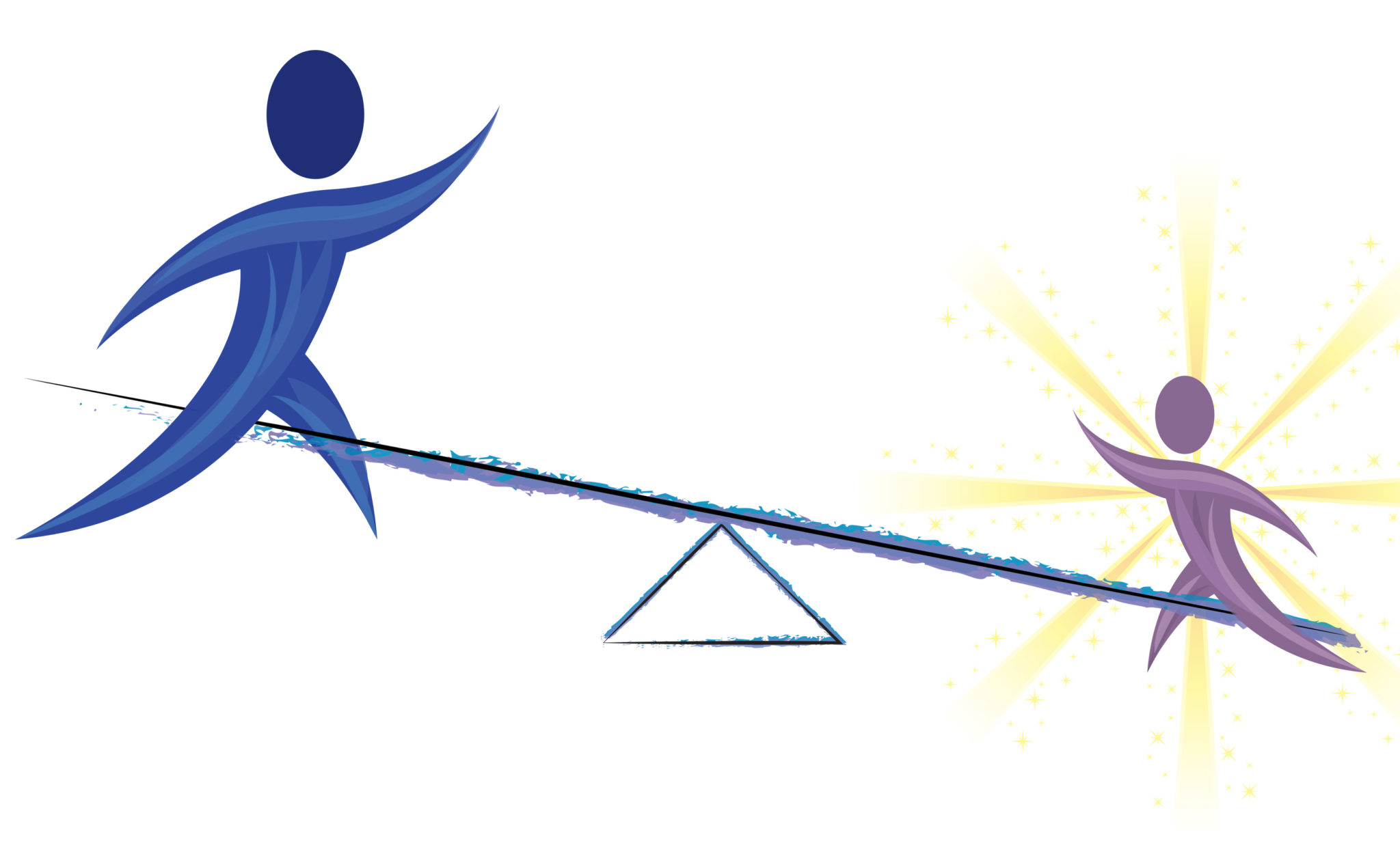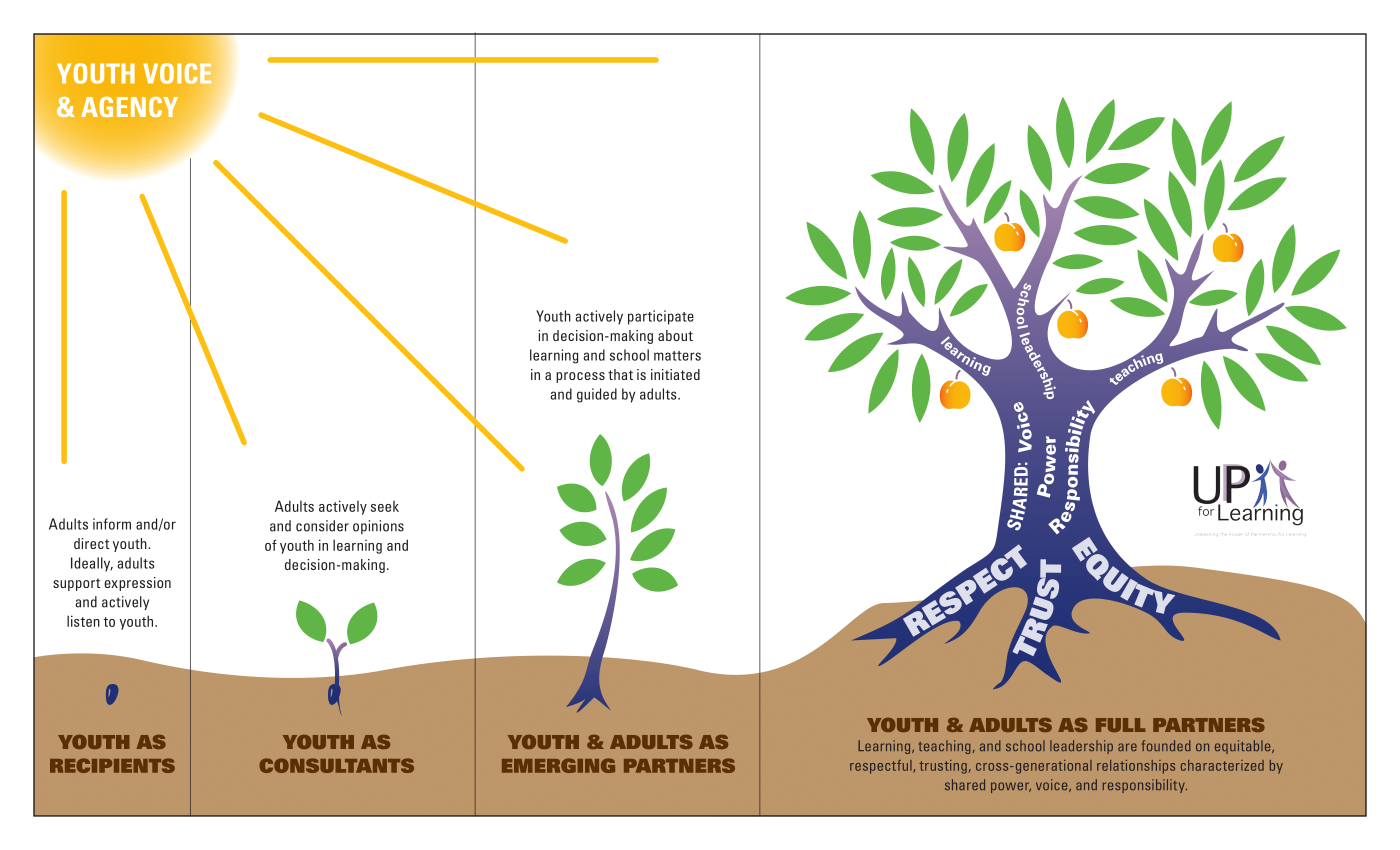The Teeter-Totter Effect: How to Avoid a Common Pitfall of Learner-Centered Transformation
Voices from the Field 17 September 2019
By Helen Beattie, UP for Learning
Imbued with purpose and hope, youth-adult partnership brings out our “best selves.”
Helen Beattie
Executive Director and Founder
The personalization of learning requires the relationship between youth and educators to shift from a traditional, adult-dominated structure to one of partnership and shared responsibility. As states and districts seek to change practices within their local systems, the opportunity to make this pivotal shift is arising all over the country. I am personally witnessing this in Vermont—where personalized learning is the statewide goal—including offering “flexible pathways” to graduation and shifting to proficiency-based learning. This vision is now policy in the state.
This has opened the door to unprecedented opportunities for young people to be at the center of our change efforts, rather than their common role as passive recipients. However, we can’t simply will this mindset into existence. We must take intentional, guided action in shifting our mental models and practices to this partnership-based approach.
UP for Learning has been taking on the challenge of forming authentic, equitable youth-adult partnerships in schools over the past 12 years. I want to share a particular hurdle—the Teeter-Totter Effect—we have seen in our work, with the hope that naming and exploring this potential pitfall will expedite the journey for others on the road to fully expressed youth-adult partnerships.
The Teeter-Totter Effect
The journey from an adult-dominated teacher-student relationship model to a youth-adult partnership model requires a recalibration of norms, including mental models, power structures, communication, collaboration, decision making, and shared responsibility. As with any change in beliefs and practices, the calibration process is anything but simple and linear. We can often find ourselves so adamant about making a shift that we move from one extreme to the other—creating yet another imbalanced system.
If we imagine a teeter-totter with an adult on one side and a young person on the other, a well-functioning youth-adult partnership allows both the adult and young person to have both feet on the ground—perfectly balancing each other out through their shared partnership along the learning journey. To get there, we must first examine where we’re starting—the adult-dominated system.
Adult-Dominated
In our dominant cultural norm, adults are grounded with the power and responsibility to shape most aspects of educational decisions, essentially “doing” education to and for youth. Young people are “along for the ride” in a largely passive role. Being suspended in air can feel delightfully unburdened or frustratingly out of control. The response of youth ranges from acceptance and comfort (e.g. playing the game of school) to anger and withdrawal (e.g. dropping out). Adults are firmly grounded in a comfortable and known role, often unaware they are missing an invaluable perspective in their decision-making process.

When the teeter-totter is in this position, the wisdom, knowledge, passion, commitment, and ownership of one of the major stakeholder groups in education—young people—will be missing in the process of learning and school change.
What happens if we shift everything over to the youth?
Youth-Dominated
When a culture begins to shift to youth-adult partnership, it seeks to rectify the long-standing imbalance of power and omission of youth in decision-making. Adults step back to make space for youth voice and power, but in this way, adults can overcorrect by largely removing their own voice and input.
Now adults are passively “along for the ride,” believing their role is to defer all responsibility and decision making to youth. They fear any attempt to share their knowledge or opinions will ruin the new partnership. Youth often find joy in this new role of responsibility and sense of power. They can believe that the correction of the power imbalance requires this youth-only shift—it is their turn! But, those feelings can be offset by feelings of uncertainty or confusion due to lack of support, structure, or guidance from adults, as they confront inevitable challenges.
Adults appreciate witnessing youth leadership and the expansion of their learning capacity in such a system. But, they often feel helpless and frustrated when they have knowledge or insight that can contribute to navigating the barriers mentioned above. They have convinced themselves everything must be in the young person’s hands.
Both scenarios leave one group feeling inactive and the other overconfident and unexposed to the many possibilities that would be available to them if they were supported by their youth or adult counterpart.

When the teeter-totter swings to this position, the wisdom, knowledge, passion, commitment, and ownership of one of the major stakeholder groups in education—educators—will be missing in the process of learning and school change.
Youth-Adult Partnership
Youth-adult partnership in its authentic, equitable form allows both youth and adults to be firmly grounded in shared power and responsibility—readily sharing their wisdom, knowledge, passion, and commitment. Learners and educators know they are invaluable partners with a relationship rooted in respect, trust, and equity. All feel the joy and weight of shared responsibility, and continually build their capacity as change agents in their own lives and in shaping their school community.
Both learning and school change efforts are orchestrated “with” youth in contrast to everything being done “to and for them.” Decision-making is flexible, with youth sometimes in the lead and, at other times, adults. A trusting and mutually respectful relationship makes this both comfortable and empowering.

Realizing the full potential of both stakeholder groups results in an unprecedented capacity to co-create an engaging and equitable learning environment, seeding lifelong civic capacity.
How can we create the best of both worlds where adults and youth alike feel empowered and open to receiving support from everyone in their learning community, regardless of age?
How can I expedite my school’s shift to youth-adult partnership?
UP for Learning has been working for years to help youth-adult teams hone their partnerships and stabilize the teeter-totter effect. We know it takes time and intention to get “four feet on the ground”—the balanced sharing of responsibility and power that makes youth-adult partnerships most effective. And, we’ve learned three key lessons along the way, as well as developing some powerful tools to make this outcome a reality.
1. Help both youth and adults understand the WHY of the change to youth-adult partnership, creating a shared vision for this destination.
Shifting mental models of roles and responsibilities is key to implementing youth-adult partnerships in learning and decision-making. Yet, we have observed that many young people, and educators, feel this is simply a new method being imposed on them. They don’t see how shifting relationship norms can help realize the full potential of more learner-centered practices.
This is a reasonable response. When people hear education jargon such as “youth voice and choice,” or “student-centered learning,” the youth-dominated model is often what they assume is being proposed. “Youth voice and choice” is believed to be absent any adult input, and “student-centered learning” is too often viewed as something uninformed by negotiated or co-created learning methods and goals. Our job is to offer new mental models for this paradigm shift and unpack (or avoid) the jargon whenever possible. By illuminating these misconceptions for what they are, we can lessen resistance to change.
UP for Learning’s “What’s the Deal with Proficiency-Based Learning?” video is one example of a helpful tool for communities to use in introducing and seeding conversation about the “why” of this shift. Linking these new practices to brain-based research has proven to be one effective approach to explaining the rationale for change. Having this information provided by a young person (as done in this video) only increases the impact of this strategy.
2. Help people understand the destination and the incremental steps to that end.
As groups explore the youth-adult partnership concept, we suggest providing a roadmap to introduce the broad concepts of the journey. The framework of moving from youth as “recipients,” to “consultants,” to “emerging partners” en route to a full youth-adult partnership are helpful benchmarks. These can be effectively shared through a tree metaphor:

Next, explore the core variables that must shift along the way: mental models, power dynamics, communication/collaboration, and decision-making/shared responsibilities. UP for Learning has created the Youth-Adult Partnership Roadmap rubric specifically for this purpose.
The roadmap helps affirm the strengths of current practices and creates dialogue about the forthcoming changes in roles and responsibilities within the learning community. Educators and young people alike are given the opportunity to openly explore the pros and cons of each proposed shift and define the next steps toward this goal. Additionally, the “Taking the Pulse of Partnership” rubric is a tool to help teams monitor the meeting and task management process, including communications, decision making, and roles and responsibilities.
This shared understanding and language that grounds youth-adult partnership can serve as an ongoing touchstone to expedite the paradigm shift.
3. Create community commitments or norms that reflect partnership, and then embed these norms into the fabric of the team’s relationships.
The easiest way to expedite the teeter-totter recalibration process is to establish a safe environment in which to co-create norms that support partnership—beginning with trust, respect, and equity of voice. Once these norms have been created and agreed upon by both youth and adults, they must be referenced regularly.
There must also be an allowance for inadvertently reverting back to old patterns and an agreed-upon means of “gentle reminders” to put the group back on track. As previously noted, this is anything but a linear or simple process. Mistakes are often a catalyst for the most poignant moments of growth, as new norms take root. UP for Learning frequently weaves in Margaret Wheatley’s poem, “Turning to One Another,” as an entry point in deciding upon these new inclusive and empowering principles and practices because, “There is no power greater than a community discovering what it cares about.”
Four Feet on the Ground: Balancing the Teeter-Totter
The Teeter-Totter Effect can slow or completely halt the personalization of learning if left unchecked. But, if these five “whys” for shifting from an adult-dominated model to a youth-adult partnership model are kept in the hearts and minds of everyone in the learning community, you will be well on your way to a transformed learning model:
- Young people understand the importance of their role in learning and decision-making, sparking ownership and engagement.
- Educators can focus more on facilitating learning and less on behavior management; time previously consumed by a power dynamic (eg. “make me learn”) is replaced by learning itself.
- Increased academic performance brings with it a cascade of positive ripples.
- There is renewed hope when both adults and youth know that they matter to each other, to learning, and to the school change process itself.
- There is equity in access to engaging learning, where each and every young person believes in their capacity and agency in the world.
Imbued with purpose and hope, youth-adult partnership brings out our “best selves.” All parties are fully empowered to work in community toward a shared goal. How will you create this future in your community?
New resources and news on The Big Idea!
×
We recently announced a new R&D acceleration initiative to connect and support local communities ready to bring public, equitable, learner-centered ecosystems to life.